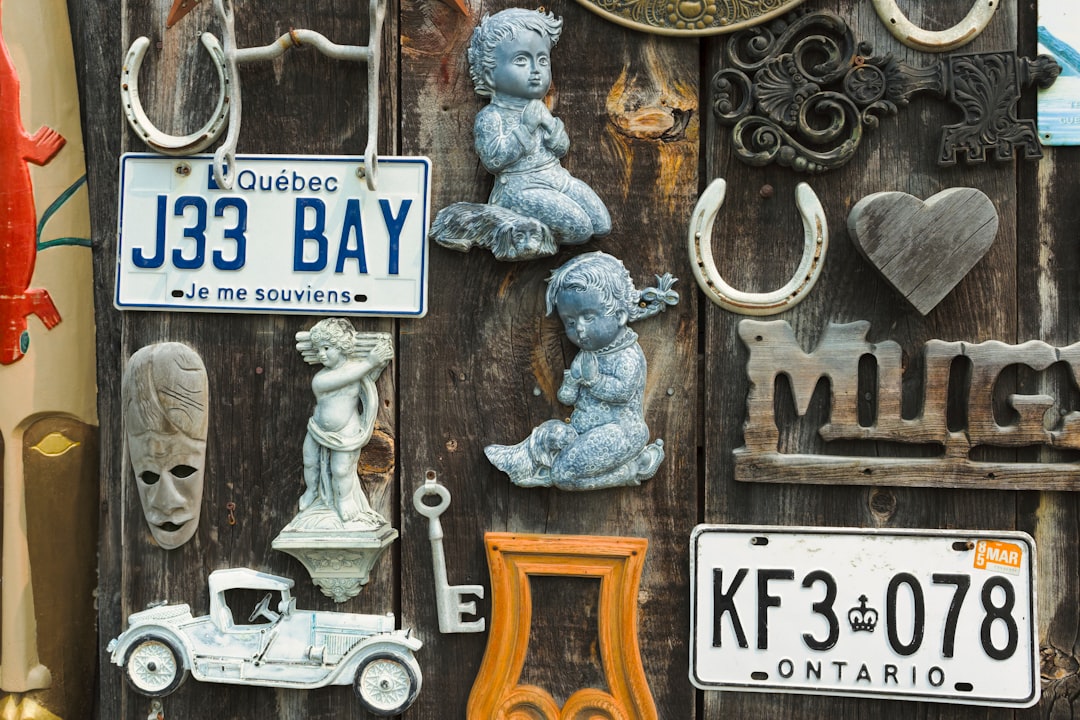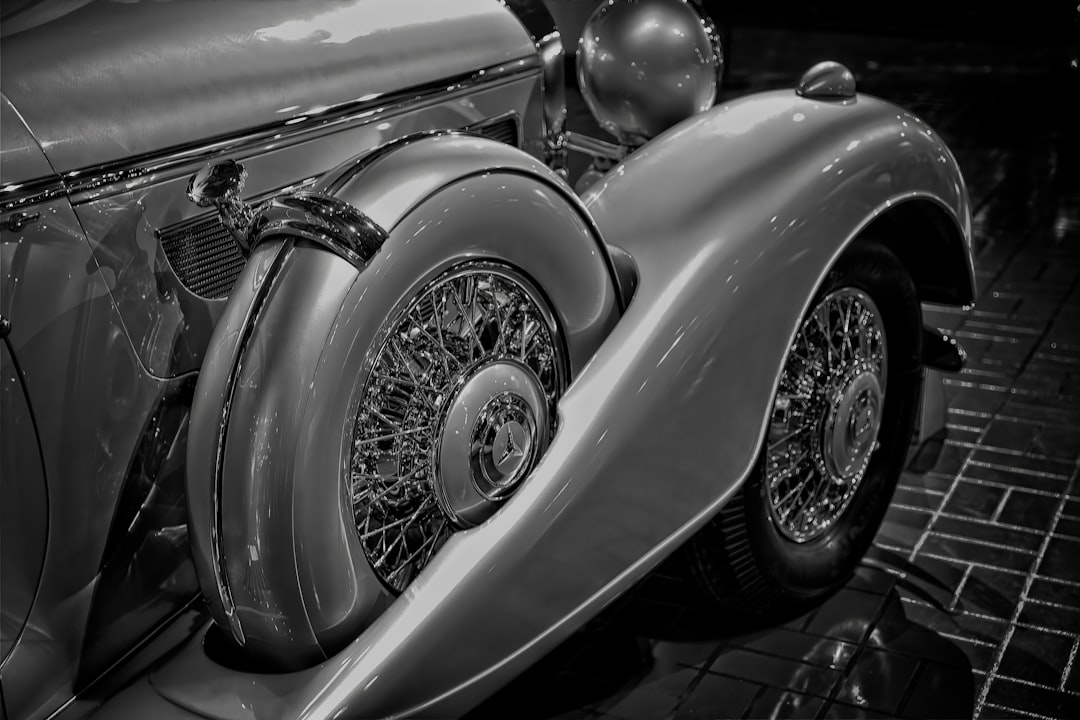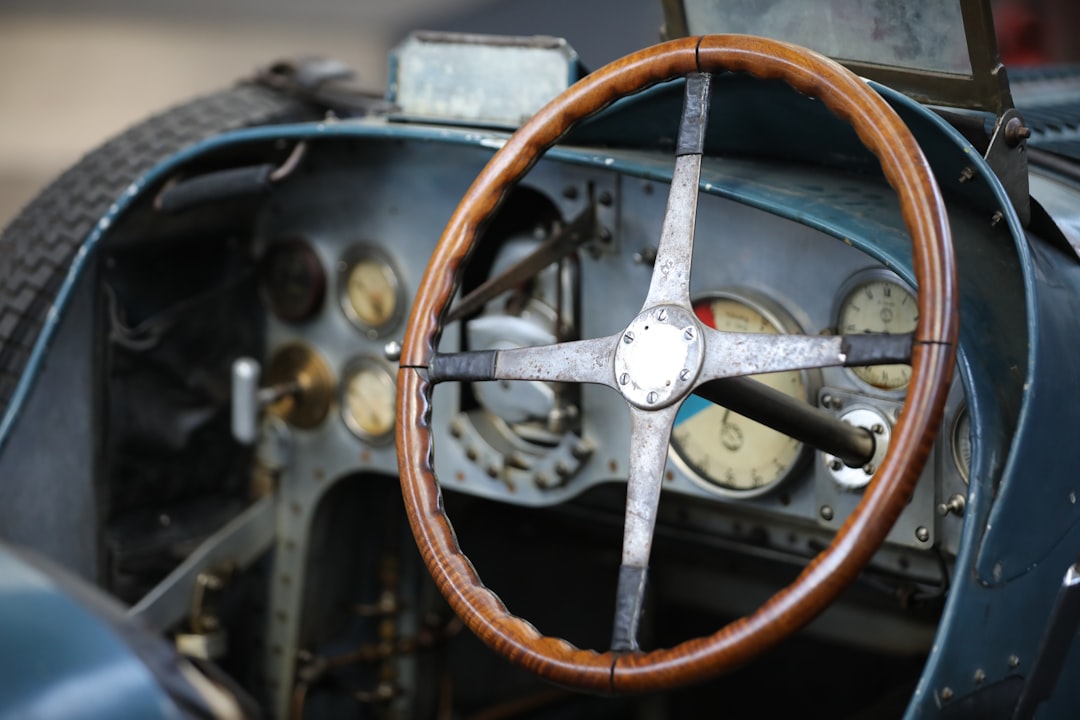

Engage prospects with a scan and streamline customer engagement with FREE QR code marketing tools by Sona – no strings attached!
Create a Free QR CodeFree consultation

No commitment

Engage prospects with a scan and streamline customer engagement with FREE QR code marketing tools by Sona – no strings attached!
Create a Free QR CodeFree consultation

No commitment
In today’s digitally driven world, QR codes have evolved from a novelty to a strategic powerhouse that bridges offline engagement with online action. For antique auto parts dealers, they offer a fast, frictionless way to capture leads from every analog surface: show booths, catalogs, flyers, shelves, and even invoices. Scanners move instantly to live inventory, provenance records, quote requests, or restock alerts without any app downloads or complex forms. The result is more leads captured in the moment and fewer missed chances to connect with restorers, collectors, and shops while interest is still high.
Many classic automotive dealers still rely on printed catalogs, manual inquiry forms, and trade show sign-up sheets. These methods are slow, error-prone, and hard to track. QR codes modernize this workflow by making every touchpoint scannable and traceable. Once scan data flows into a CRM or email platform, dealers can segment by intent, follow up faster, and prove which events or assets truly drive revenue. This guide explains how to deploy QR codes across your merchandising, advertising, and in-person experiences so you can capture reliable leads, personalize outreach, and scale growth with confidence.

Reliable lead capture starts by removing the friction between offline curiosity and online action. In the antique auto parts category, that friction shows up when a buyer flips through printed catalogs, inspects a rare carburetor at a swap meet, or studies a shelf tag for an OEM trim piece, yet leaves without identifying themselves. Manual forms and clipboards invite delays and errors; busy staff may not catch every hot lead; and by the time someone types a URL at home, the impulse has passed.
QR solutions replace those gaps with simple, scannable calls to action. Place a code on a banner beside a featured part to open a short inquiry form; put a code on a catalog page to link to live inventory; add a code to a parts tag to show provenance and let the buyer subscribe to restock alerts. Each scan is captured in real time, then synced to your CRM via Sona + HubSpot, where a sales rep or automation can follow up while intent is strongest.
Dealers who replace manual show sign-ups with QR-enabled forms see a steady lift in lead volume and data quality. Fields can prefill based on context, errors drop, and the right sales rep is notified immediately. Instead of guessing who visited your booth or which catalog pages drove interest, scan analytics show exactly what worked and where to double down.

Standing out in a fragmented classic parts market is hard, especially when much of the sales journey begins at live events, swap meets, and in-store browsing. Traditional tactics make it difficult to attribute interest to specific parts or campaigns. Visitors come and go anonymously; staff cannot capture every conversation; print materials are impossible to measure on their own.
QR codes solve these gaps with speed and simplicity. They provide a clear, immediate bridge to the next step while making each display or brochure trackable. No app is required, and even a quick scan from a passerby can turn into a lead with an email address, preferred model year, and part category of interest. Everything is measurable, from which banner got the most scans to which day of the event produced the most high-fit leads.
In a category where authenticity and trust matter, QR codes also enhance transparency. Link a tag to provenance documents, restoration photos, or a short explainer on part verification. Buyers feel reassured; dealers earn authority; and the digital interaction leaves a trail you can nurture with relevant follow-up.
QR formats should map to your most common buyer actions. In antique auto parts, several formats stand out as especially useful for speed, trust, and follow-up.
Static codes work for fixed destinations, like a general contact card or a printed map to your warehouse. Dynamic codes are better for anything that might change, like inventory, event offers, or content tests. With a platform like Sona QR, you can generate and organize all formats in one place, then route scans based on campaign or device to ensure the best experience.

Growth often hides in plain sight. The highest intent moments happen around physical assets: a shelf tag on a rare manual transmission, a poster highlighting OEM chrome, or a catalog page featuring fuel systems by model year. QR codes convert those micro-moments into measurable, actionable signals.
By auditing your physical touchpoints and adding a relevant scan-to-action path, you convert anonymous attention into structured data. Over time, that data reveals which combinations of placement, message, and offer produce the best leads and the highest conversion rates.

Below are three high-impact use cases aligned to the most common customer interactions in this vertical. Each bridges a specific offline moment to a measurable digital outcome.
Each use case can be extended with dynamic codes and segmented landing pages. For example, at a show, route scans from your Ford display to a Ford-specific form with model-year fields, while Chevrolet scans go to a different workflow. This keeps data clean and makes your follow-up highly relevant.
Every scan is a signal. The location of the scan, the asset that led to it, the time of day, and the destination page all reveal intent. Antique auto parts dealers can transform these signals into powerful audience segments for retargeting and nurture.
Start by giving each major journey stage its own set of codes and destinations. Flyers and banners should route to awareness content like collections and buying guides; product placards should route to consideration content like fitment checks, price ranges, and restoration case studies; checkout desks and invoices should route to conversion actions like restock alerts, service bookings, or loyalty enrollment.
With Sona QR, segments are created automatically as scans come in, and Sona.com can unify those intent signals with website visits, ad clicks, and email opens. In this vertical, you might separate audiences into restorers, collectors, dealers, body shops, and general hobbyists, then personalize messaging by model year range or part system of interest. For deeper context on segmentation by behavior, see Sona’s view on intent data.
QR codes become the connective tissue of your marketing when they are embedded across all channels. They give print and in-person moments a digital path forward while feeding reliable data back into your analytics and CRM.
The key is consistency. Feature QR codes on all physical assets and coordinate the digital destinations with your current promotions, inventory, and seasonal focuses. With Sona QR as a central hub, you can manage every code, keep destinations updated, and measure cross-channel performance without guesswork.
A well-structured rollout ensures you capture interest at the moment it occurs and route each scan to the right next step. Use the checklist below as a baseline, then adapt it to your events, catalogs, and retail environments.
Clarify the primary outcome. Are you driving restoration inquiries, authenticating rare parts, or filling workshop bookings after a show weekend? Each goal requires a different destination, data model, and follow-up plan.
Choose between static and dynamic based on your need for flexibility, tracking, and segmentation. In most lead capture scenarios, dynamic codes are the better fit since they allow for content updates and detailed analytics.
Make your QR codes unmistakable and easy to scan in real-world conditions. Visual clarity, contrast, and sizing play a larger role than many teams expect.
Start where traffic is heaviest and intent is strongest, then expand. Layer placements to create multiple entry points that feed the same audience segment.
Use real-time data to spot wins early and redirect energy to what works best. Optimization turns a good QR program into a great one.

The biggest missed opportunity in analog-heavy environments is the lack of attribution. You may know an event felt busy, but not whether your Chevrolet small-block display outperformed your Buick trim table or which flyer actually drove orders. Modern QR platforms replace assumptions with hard data, then link scans to pipeline and revenue.
By tagging codes by event, asset, and product family, you can see exactly what captured attention and what converted. With Sona QR, each scan records device type, time, location, and source. When connected to Sona.com, those intent signals are matched to on-site behavior, email activity, and CRM records to create a unified buyer journey. This is where QR stops being a novelty and starts acting like a performance channel.
As the dataset grows, your forecasts and inventory decisions improve. You can order more of what your audience genuinely wants, schedule staff when foot traffic peaks, and refine your event calendar to prioritize the shows that produce reliable outcomes.
Maximize the return on your QR investments with a few practical best practices tailored to this vertical. Focus on the media you use most and the moments that matter most to your buyers.
Creative placements work well in this category. Consider a “Scan to watch installation tips” code on packaging for complex parts or “Scan for restock alerts” stickers on empty pegs in-store. Small touches like these keep buyers engaged and help you capture intent throughout the journey.
The old approach of waiting for written inquiries or calling back hours after a show visit no longer fits how collectors and restorers make decisions. QR code programs digitize every offline interaction, capture interest at the source, and transform anonymous browsing into qualified pipeline. Each scan becomes a signal that informs your inventory strategy, sales priorities, and marketing spend.
By integrating QR codes across events, catalogs, packaging, and retail signage, antique auto parts dealers create a consistent, measurable path from initial curiosity to closed deals. You gain the agility to adjust offers in real time, the clarity to see which assets truly perform, and the tools to follow up faster with more relevance. Dealers who make QR-driven lead capture a core part of their operation set a higher standard for responsiveness, transparency, and growth in a competitive, collector-driven market.
If you want to launch quickly and scale confidently, Sona QR gives you everything needed to generate dynamic codes, track performance, and sync intent data into your CRM. Pair it with Sona.com to attribute scans to revenue and unify offline-to-online journeys. Start creating QR codes for free.
QR codes have transformed the antique auto parts dealers industry from traditional, static marketing into dynamic, measurable lead-generation engines. Whether it’s capturing qualified leads at classic car shows, enhancing in-store customer interactions, or providing instant access to detailed part information, QR codes replace guesswork with real-time data and seamless engagement. Imagine instantly knowing which vintage catalogs or display pieces drive the most inquiries—and being able to optimize your marketing on the fly.
With Sona QR, you can create dynamic, trackable QR codes tailored for antique auto parts dealers in seconds, update campaigns without costly reprinting, and connect every scan directly to your sales pipeline. No more missed opportunities or wasted marketing spend—just smarter, more profitable customer acquisition and retention.
Start for free with Sona QR today and turn every scan into a new lead, a loyal customer, or a completed sale.
You can find antique auto parts dealers at trade shows, swap meets, specialty shops, and by searching online directories or platforms that list classic automotive parts dealers.
The article does not specify particular online dealers, but recommends using platforms that offer live inventory, provenance records, and dynamic QR code integration for reliable parts sourcing.
Authentic antique auto parts can be verified by scanning QR codes linked to provenance documents, certification details, serial number photos, and origin notes provided by dealers.
The article does not provide specific pricing information for antique auto parts as costs vary widely depending on rarity, condition, and part type.
Use QR codes to access live inventory, restoration quote requests, installation tips, and provenance information; engage with dealers who provide detailed documentation and timely follow-up; and ensure you track and verify parts authenticity for a trusted restoration.
Use Sona QR's trackable codes to improve customer acquisition and engagement today.
Create Your FREE Trackable QR Code in SecondsJoin results-focused teams combining Sona Platform automation with advanced Google Ads strategies to scale lead generation

Connect your existing CRM

Free Account Enrichment

No setup fees
No commitment required

Free consultation

Get a custom Google Ads roadmap for your business






Launch campaigns that generate qualified leads in 30 days or less.
